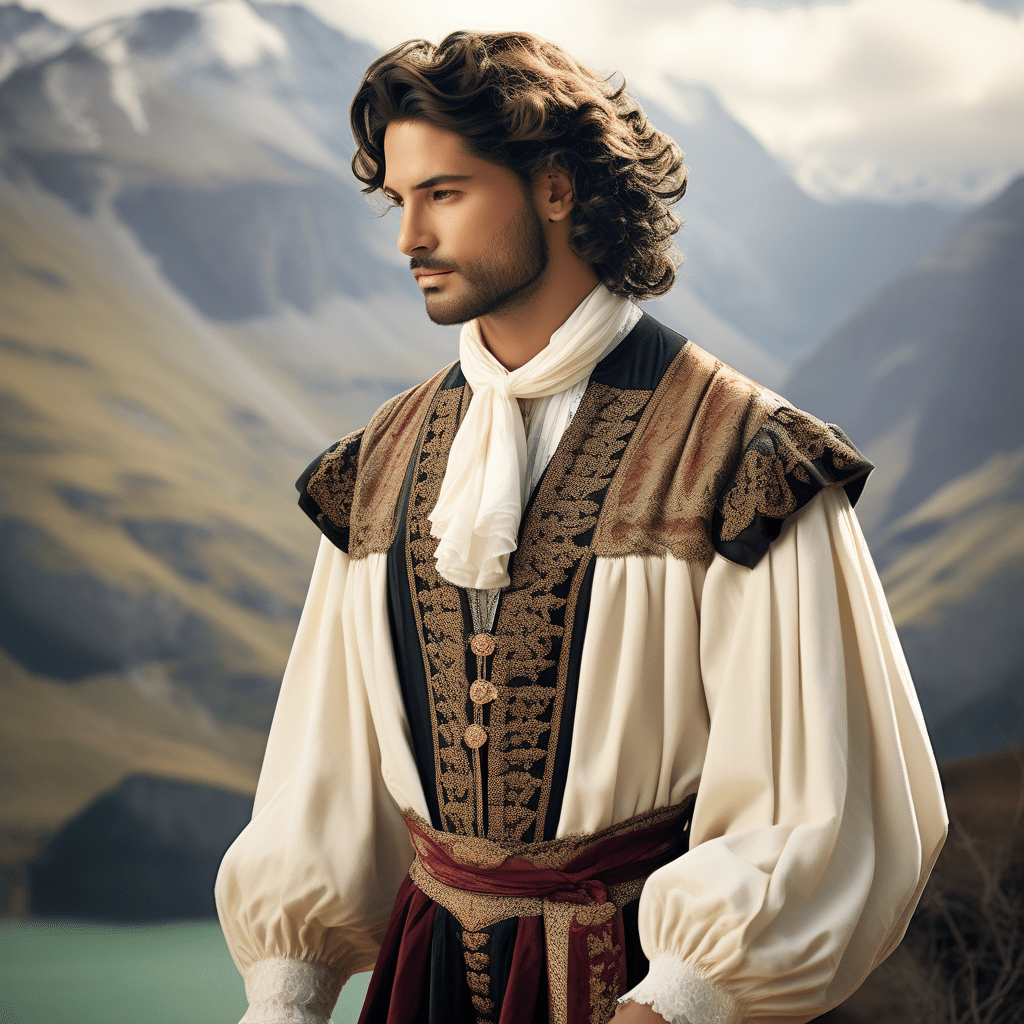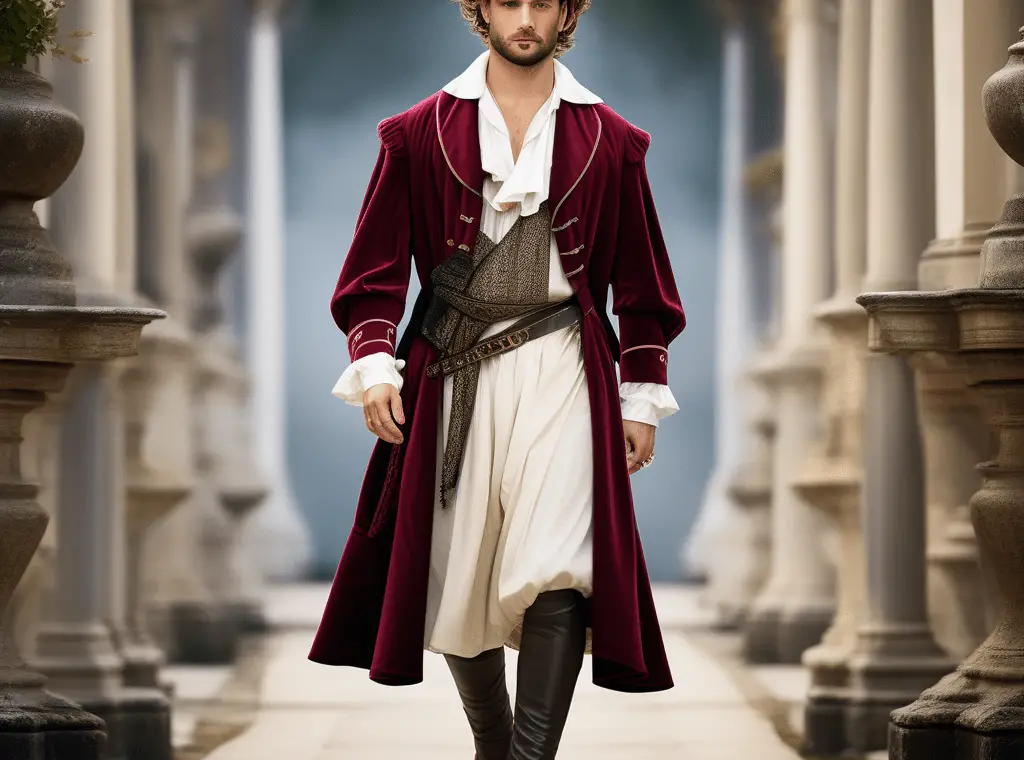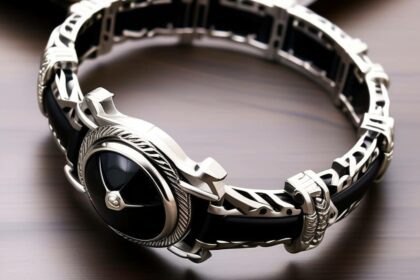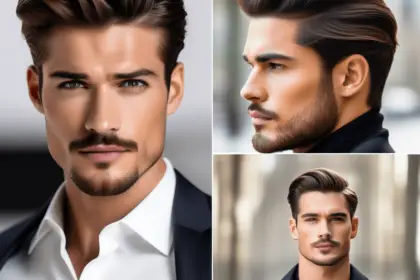Renaissance fashion for men refers to the style of clothing and accessories worn by men during the Renaissance period, which spanned roughly from the 14th to the 17th century in Europe. This epoch was characterized by a revival of interest in classical art, literature, and philosophy, and this cultural reawakening was notably reflected in the clothing choices of the time.
Table of Contents
A Resplendent Tapestry of Elegance and Innovation

- The Renaissance period, spanning roughly from the 14th to the 17th century, was a time of profound cultural, artistic, and intellectual transformation in Europe.
- This epoch of rebirth witnessed a resurgence of interest in classical antiquity, leading to a redefinition of societal norms, including fashion. For men during the Renaissance, clothing became a powerful expression of social status, wealth, and individual identity.
Fabrics and Colors: A Palette of Opulence
- The fabrics employed in Renaissance men’s clothing reflected the era’s emphasis on opulence and luxury. Rich materials such as silk, velvet, and brocade were favored by the affluent, while wool and linen were more common among the lower classes.
- The choice of fabric was often dictated by social standing, with sumptuary laws regulating the types of materials and colors that could be worn by different classes.
- Colors played a significant role in Renaissance fashion. Deep, jewel-toned hues like burgundy, emerald green, and sapphire blue were popular among the elite. The use of intricate patterns and elaborate embroidery further enhanced the garments, showcasing the craftsmanship of skilled artisans.
Layers and Silhouettes: A Symphony of Textures
- Renaissance men’s clothing was characterized by a layered and textured aesthetic. The fundamental components included a shirt, doublet, hose, and various outer garments.
- The shirt, typically made of linen, served as the base layer, while the doublet, a snug-fitting jacket, added structure and style. Hose, a form of tight-fitting trousers, could be either separate or attached to the doublet.
- The silhouette of men’s clothing evolved throughout the Renaissance. Early in the period, the silhouette was relatively straight and flat, emphasizing a more natural body shape.
- As the era progressed, a more exaggerated silhouette emerged, with padded shoulders and a pronounced waistline. This shift in shape was achieved through the use of padding, boning, and strategic tailoring.
Headwear and Accessories: The Finishing Touches
- Headwear played a crucial role in completing the Renaissance look for men. During the early Renaissance, hats such as the beret and coif were popular. However, as the era progressed, elaborate headdresses like the flat cap and the feathered bonnet gained favor among the fashionable elite.
- These headpieces were often adorned with jewels, feathers, and intricate embroidery, further emphasizing the wearer’s status.
- Accessories were used to add flair and individuality to men’s ensembles.
- Ruffs, elaborate collars made of pleated fabric or lace, were a ubiquitous accessory that varied in size and complexity based on social standing. Belts, gloves, and jewelry, including rings and chains, were also employed to enhance the overall look and communicate one’s wealth and status.
Footwear: A Step Towards Fashion Forwardness
- Footwear in the Renaissance underwent significant changes, with pointed toes and heels becoming fashionable. Shoes were often made from leather and embellished with decorative elements such as buckles and embroidery.
- The height of the heel was indicative of social status, with higher heels reserved for the upper classes.
Sumptuary Laws and Social Significance
- The Renaissance was a period marked by rigid social hierarchies, and clothing became a powerful tool for signaling one’s place in society. Sumptuary laws were enacted to regulate the types of clothing and accessories that individuals could wear based on their social rank.
- These laws reinforced class distinctions and aimed to prevent social mobility through conspicuous consumption.
- The clothing worn by Renaissance men was not merely a matter of personal choice; it was a statement about one’s identity, wealth, and societal position.
- The elaborate and intricate nature of Renaissance fashion reflected the era’s cultural and artistic flourishing, with clothing serving as a canvas for self-expression and social commentary.
Legacy and Influence: A Lasting Impact on Fashion
- The legacy of Renaissance fashion endures in contemporary attire, with echoes of its opulence and attention to detail found in modern formal wear.
- Elements such as ruffled collars, elaborate embroidery, and structured silhouettes continue to inspire designers, contributing to a timeless aesthetic that transcends centuries.
Conclusion
In conclusion, Renaissance fashion for men was a complex and multi-faceted tapestry that reflected the societal dynamics and cultural vibrancy of the era. From luxurious fabrics to intricate accessories, every element of men’s clothing conveyed a narrative of identity and social standing. The evolution of Renaissance fashion not only shaped the aesthetic sensibilities of the time but also left an indelible mark on the broader trajectory of Western sartorial history
What is Renaissance fashion for men?
Renaissance fashion for men refers to the distinctive clothing and accessories worn during the 14th to 17th century in Europe, characterized by opulent fabrics, bold colors, and layered silhouettes.
What fabrics were commonly used in Renaissance men’s clothing?
Luxurious fabrics such as silk, velvet, and brocade were favored by the wealthy, while wool and linen were more common among the lower classes.
How did the silhouette of men’s clothing change during the Renaissance?
The silhouette evolved from a relatively straight and flat shape to a more exaggerated form with padded shoulders and a pronounced waistline, achieved through padding, boning, and tailoring.
What role did accessories play in Renaissance men’s fashion?
Accessories like ruffs, belts, gloves, and jewelry were crucial for enhancing the overall look, signaling social status, and adding individuality to the wearer’s ensemble.
How did sumptuary laws impact Renaissance fashion?
Sumptuary laws regulated the types of clothing and accessories individuals could wear based on their social rank, reinforcing class distinctions and preventing social mobility through conspicuous consumption.






